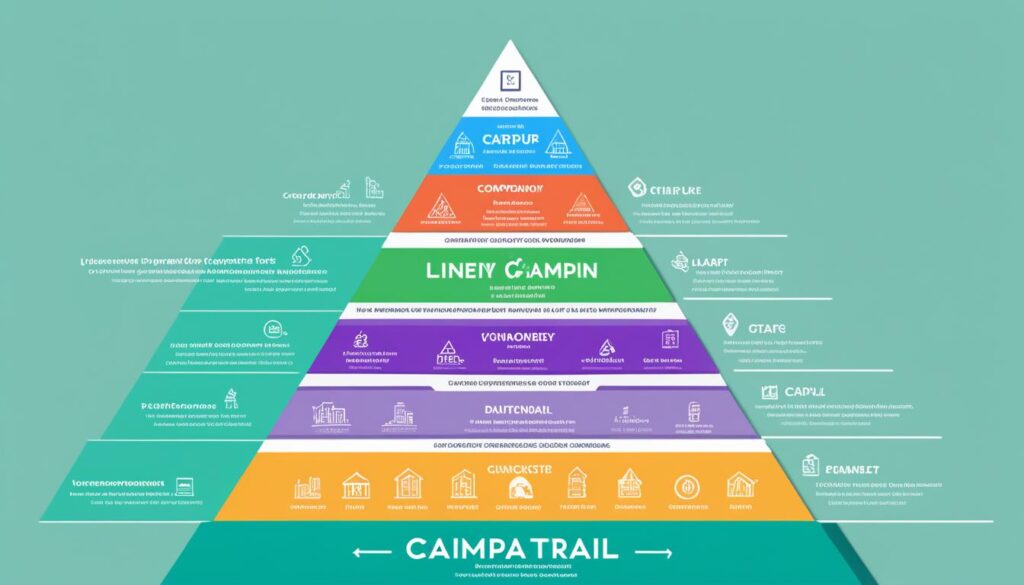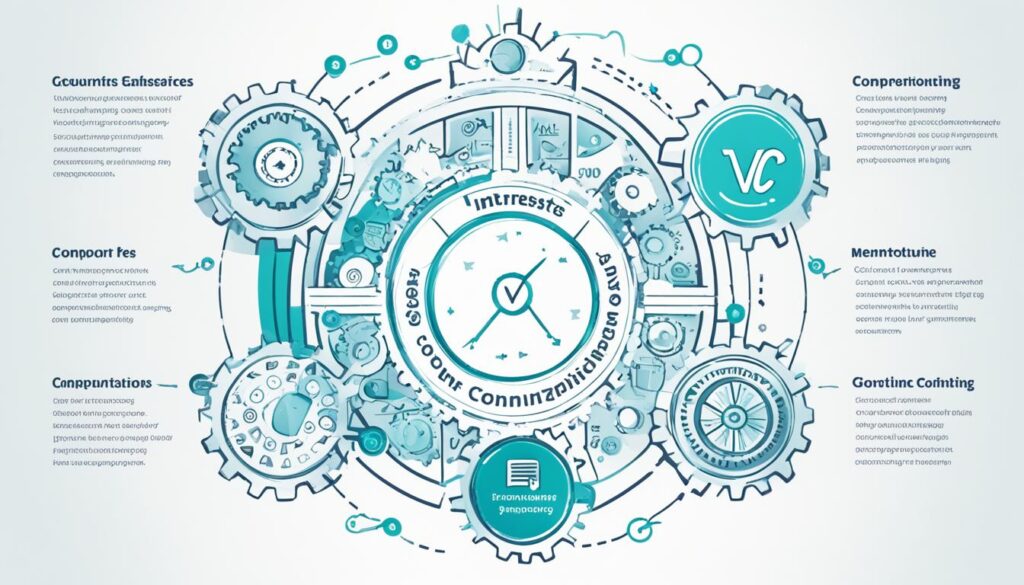Venture capital plays a crucial role in fueling innovation and economic growth, with venture capitalists (VCs) serving as the linchpins in an efficient system for meeting the needs of various stakeholders. However, the inner workings of VC partner compensation are often not well understood. How exactly do these venture capital professionals earn their keep? This article aims to shed light on how VC partners get paid and the factors that influence their earnings, providing entrepreneurs and investors with a deeper understanding of the venture capital ecosystem.
Key Takeaways
- Venture capitalists earn compensation through management fees and carried interest (carry).
- Management fees provide a steady income stream, covering the operational expenses of the VC firm.
- Carried interest, typically around 20% of the fund’s profits, represents the potential windfall for successful investments.
- Factors influencing VC partner compensation include fund size, performance, reputation, and individual deal performance.
- The venture capital ecosystem involves limited partners, general partners, and management companies, each with a distinct role.
Understanding Venture Capital
Venture capital is a specialized form of private equity investment, focused on young, dynamic companies with high growth potential. Unlike traditional bank loans or public market financing, venture capital is typically exchanged for equity in the company, aligning the interests of venture capitalists (VCs) and entrepreneurs. The venture capital ecosystem includes a diverse set of players, including limited partners (LPs) who provide the capital, general partners (GPs) who manage the investments, and management companies (ManCos) that oversee the day-to-day operations of VC funds.
Defining Venture Capital
Venture capital is a unique form of financing that focuses on supporting young, high-potential companies. Unlike traditional bank loans or public market investments, venture capital is typically provided in exchange for an equity stake in the company. This alignment of interests between VCs and entrepreneurs is a defining characteristic of the venture capital model.
The Venture Capital Ecosystem
The venture capital ecosystem is composed of several key players, each with a distinct role to play. Limited partners (LPs) are the primary source of capital for VC funds, which can include affluent individuals, pension funds, endowments, and other institutional investors. General partners (GPs) are the venture capitalists who manage the investments and provide strategic guidance to the portfolio companies. Management companies (ManCos) are the firms that oversee the operations of VC funds, making investment decisions and managing the funds’ assets.
The Role of Venture Capitalists
Venture capitalists play a multifaceted role beyond just providing capital. They often take on advisory positions, offering strategic guidance, industry expertise, and mentorship to the entrepreneurs they invest in. VCs also serve as a crucial bridge, connecting startups with a broader network of potential customers, partners, and future investors. While the level of hands-on involvement can vary, the best venture capitalists bring substantial value-add to the companies they back, helping to navigate the complexities of growing a business.

VC Compensation Structure
Venture capitalists earn compensation in two primary ways: management fees and carried interest (carry). These two components work together to create a balanced approach that incentivizes VC partners to drive performance and align their interests with those of the companies they invest in.
Management Fees
Management fees are charged as a percentage of the total fund amount, typically around 2% per year. These fees are used to cover the operational expenses of running the VC firm, including salaries, office costs, and other overhead. The management fee structure is designed to provide a steady income stream for the VC partners, even as the fund’s investments are still maturing and generating returns.
Carried Interest (Carry)
The second component of VC compensation is carried interest, or “carry,” which represents a share of the fund’s profits. Carried interest is typically set at around 20% of the fund’s returns, providing a significant upside for the VC partners if the fund’s investments perform well. This structure aligns the interests of the VCs with the success of the portfolio companies, as the partners stand to earn a substantial portion of the gains from profitable exits. The carry is only realized once the fund has returned the initial capital to the limited partners, incentivizing the VC partners to focus on maximizing returns.
| Compensation Component | Typical Range | Purpose |
|---|---|---|
| Management Fees | ~2% of total fund size per year | Covers operational expenses of the VC firm |
| Carried Interest (Carry) | ~20% of fund profits | Aligns VC partners’ interests with portfolio company success |

How do VC partners get paid?
Venture capital (VC) partners receive compensation through two primary channels: management fees and carried interest (carry). These distinct income sources reflect the multifaceted role VC partners play in the venture capital ecosystem.
Management Fees: The Steady Income Stream
VC partners receive a steady income stream through management fees, which are charged as a percentage of the total fund size, typically around 2% per year. These management fees are used to cover the operational expenses of running the VC firm, including salaries, office costs, and other overhead. The management fee structure is designed to provide a reliable source of revenue for the VC partners, even as the fund’s investments are still maturing and generating returns.
Carried Interest: The Potential Windfall
The more significant source of compensation for VC partners is carried interest, or “carry,” which represents a share of the fund’s profits. Carried interest is typically set at around 20% of the fund’s returns, providing a substantial upside for the VC partners if the fund’s investments perform well. This structure aligns the interests of the VCs with the success of the portfolio companies, as the partners stand to earn a significant portion of the gains from profitable exits. The carry is only realized once the fund has returned the initial capital to the limited partners, incentivizing the VC partners to focus on maximizing fund performance-based pay.

Factors Influencing VC Partner Compensation
The size and performance of the VC fund play a significant role in determining the compensation of the partners. Larger VC fund size typically generates higher management fees, providing a more substantial steady income stream for the partners. Additionally, the fund’s overall returns, as measured by metrics like internal rate of return (IRR) and total value to paid-in (TVPI), directly impact the VC carried interest allocation earned by the partners. Successful funds with strong VC track record can command higher carried interest percentages and attract more capital, further increasing the partners’ potential earnings.
The reputation and track record of the VC partners themselves are also important factors in their compensation. Venture capitalists with a proven history of successful investments and exits can often negotiate for higher management fees and carried interest percentages, as their expertise and investment prowess are in high demand. Established VC firm reputation with a reputation for generating consistently strong returns may also be able to command more favorable terms when raising new funds, further boosting the earnings potential of their partners.
In addition to the fund-level metrics, the performance of individual deals within a VC partner’s portfolio can also impact their compensation. The carried interest earned by the partners is typically allocated based on their VC partner individual performance and contribution to the successful investments, with the partners who played a more significant role in identifying, evaluating, and supporting the most profitable portfolio companies receiving a larger share of the carry. This VC deal-level compensation structure incentivizes VC partners to focus on maximizing the returns of each individual investment.
| Factor | Impact on VC Partner Compensation |
|---|---|
| VC fund size | Larger funds generate higher management fees, providing a steady income stream for partners. |
| VC fund performance | Successful funds with strong returns can command higher carried interest percentages, increasing partner earnings. |
| VC partner reputation | Venture capitalists with a proven track record can negotiate for higher management fees and carried interest. |
| VC firm reputation | Established VC firms can attract more capital and secure more favorable terms, boosting partner earnings. |
| VC partner individual performance | Partners who contribute to the most successful investments receive a larger share of the carried interest. |

The Lifecycle of a VC Fund
The lifecycle of a venture capital fund typically spans around 10 years, with the initial VC fundraising and VC investment period lasting the first 3-5 years. During this period, the VC firm raises capital from limited partners, who commit funds to the vehicle. The VC partners then deploy this capital by investing in promising startups, with the goal of building a diversified portfolio. The management fees earned during this phase help cover the VC firm’s operational expenses and provide a steady income stream for the partners.
After the initial VC investment period, the VC fund shifts its focus to actively VC portfolio management and executing VC exit strategies for the portfolio companies. This typically involves helping the startups navigate growth challenges, secure additional funding, and ultimately achieve successful liquidity events, such as acquisitions or initial public offerings (IPOs). The VC partners continue to earn management fees during this period, but the more significant compensation comes from the carried interest generated by the profitable exits. The fund’s lifespan is generally around 10 years, with the possibility of a few one-year extensions to accommodate any remaining portfolio companies.

Aligning Interests: VCs and Entrepreneurs
The compensation structure of venture capitalists, with its emphasis on carried interest, helps to align the interests of VCs and the entrepreneurs they invest in. By tying a significant portion of their earnings to the success of the portfolio companies, VCs are incentivized to provide strategic guidance and support to help the startups achieve profitable exits. This creates a mutually beneficial relationship, where the VC partners are rewarded for their ability to identify, nurture, and capitalize on high-potential ventures. Entrepreneurs, in turn, gain access to not just financial capital, but also the expertise and network of the VC firm.
This VC-entrepreneur alignment is crucial in the startup fundraising process, as it fosters a collaborative environment where both parties are motivated to work towards the same goal: the growth and success of the business. By understanding the VC incentives and how they are tied to the performance of the portfolio companies, entrepreneurs can better position themselves to attract and retain the support of venture capitalists, ultimately increasing their chances of securing the funding and resources necessary to turn their vision into a reality.
The Venture Capital Ecosystem: Key Players
The venture capital ecosystem is populated by several key players, each with a distinct role to play. At the heart of this ecosystem are the limited partners (LPs), who serve as the primary source of capital for venture capital funds.
Limited Partners (LPs)
LPs are typically institutional investors, such as pension funds, endowments, insurance companies, and high-net-worth individuals, who provide the majority of the funding for VC vehicles. In exchange for their capital commitment, LPs receive a share of the fund’s returns, aligning their interests with the performance of the VC’s portfolio.
General Partners (GPs)
General partners (GPs) are the venture capitalists who manage the investments and provide strategic guidance to the portfolio companies. GPs are responsible for sourcing, evaluating, and selecting the startups that receive funding, as well as actively supporting their growth. In addition to their investment expertise, GPs often bring deep industry knowledge and extensive networks to the table, which can be invaluable resources for the entrepreneurs they back.
Management Companies (ManCos)
Management companies (ManCos) are the firms that oversee the day-to-day operations of VC funds, making investment decisions and managing the funds’ assets. ManCos are typically structured as limited liability companies (LLCs) or limited partnerships (LPs), with the general partners (GPs) owning a stake in the management firm. The ManCo is responsible for activities such as fundraising, portfolio management, compliance, and reporting to the limited partners.

Challenges and Trends in Venture Capital
The venture capital industry operates within a complex VC regulatory environment, with various laws and regulations governing the activities of VC firms and the funds they manage. Venture capitalists must navigate a range of VC compliance requirements, from securities regulations to anti-money laundering and know-your-customer rules. As the VC industry continues to evolve, regulatory bodies are also adapting their oversight to address emerging trends and potential risks, which can impact the operating environment for VC firms.
The venture capital industry is also witnessing the emergence of new VC investment models and alternative VC structures, as firms seek to adapt to changing market dynamics and investor preferences. This includes the rise of specialized funds, such as those focused on specific industries or stages of the startup lifecycle, as well as the growing popularity of alternative vehicles like opportunity funds and special purpose acquisition companies (SPACs). These innovative approaches aim to provide VC partners with greater flexibility and potentially higher returns, while also expanding the opportunities available to entrepreneurs seeking funding.

Regulatory Landscape
The VC regulatory environment and compliance requirements are constantly evolving, as regulatory bodies strive to address emerging trends and potential risks in the VC industry. Venture capitalists must stay abreast of these changes and adapt their practices accordingly to ensure they operate within the bounds of the law.
Emerging Investment Models
The venture capital industry is witnessing the rise of new VC investment models and alternative VC structures, as firms seek to cater to changing market dynamics and investor preferences. From specialized funds to innovative vehicles like opportunity funds and SPACs, these emerging approaches aim to provide VC partners with greater flexibility and potentially higher returns, while also expanding the opportunities available to entrepreneurs seeking funding.
| Management Fee Trends | Carried Interest Structures |
|---|---|
|
– Management fees typically account for 2% of the committed capital per year in VC funds, which cumulatively amounts to 20% over the 10-year fund duration. – Some emerging VC funds opt for lower management fees around 1.5–1.8% per year, while established funds might charge slightly higher fees. – The management fee calculation can vary based on committed capital, called capital, or deployed capital. – After the investment period ends, management fees decrease gradually until there are no fees charged post the 10-year period. |
– For VC partners to receive carried interest (percentage of gains), it typically occurs after year 8, following the return of the fund’s money to original investors. – GP partners are expected to pay their committed capital share annually, with potential returns on investment not materializing until several years into the fund’s lifecycle. – A successful VC manager can significantly increase income by managing multiple funds, with fees accumulating from each fund over time. – Dividends and capital gains from the ManCo are additional revenue streams for VC partners, especially with the management of multiple funds. |
Conclusion
The venture capital compensation structure is a complex and multifaceted topic, reflecting the unique dynamics of the VC industry. By understanding the key components of VC earnings, including management fees and carried interest, as well as the factors that influence partner compensation, entrepreneurs and investors can gain deeper insights into the motivations and priorities of the venture capitalists they work with.
As the VC ecosystem continues to evolve, adapting to new regulatory challenges and investment models, the ability to navigate the intricacies of VC partner VC partner earnings will remain a critical skill for all stakeholders in the venture capital landscape. This understanding can foster more aligned and productive relationships between VCs and the entrepreneurs they support, ultimately driving innovation and economic growth.
The venture capital industry offers a wealth of insights for those seeking to VC compensation overview and navigate its inner workings. By staying informed on the evolving trends and structures within VC compensation, entrepreneurs, investors, and industry participants can better position themselves for success in the dynamic venture capital ecosystem.
